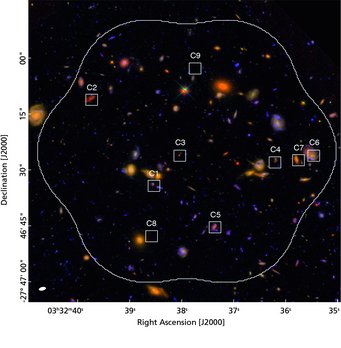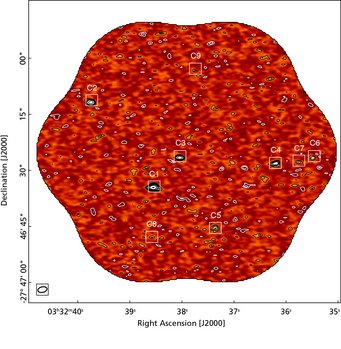Reconstructing the cosmic history of star formation: ALMA takes stock of the fuel for star formation in distant galaxies
| Background information | Download area | In-depth description of the results |
Where "Follow the money!" is a catchphrase of investigative journalism, "Follow the hydrogen molecules!" is the corresponding motto of astronomers investigating the formation history of stars in our universe: Were stellar production rates constant over time, or were there epochs of increased, or decreased, productivity?
Following the hydrogen molecules is exactly what Fabian Walter of the Max Planck Institute for Astronomy and his colleagues have done, taking an image that includes spectral information (allowing, in fact, for an enhanced three-dimensional view) of unprecedented sensitivity with the ALMA observatory to trace the amount of molecular hydrogen in distant galaxies located in the so-called Hubble Ultra Deep Field (HUDF), one of the best-studied regions of the sky. Walter and his colleagues rely on carbon monoxide, whose presence reliably indicates the existence of hydrogen molecules in the region in question, and even allows to infer the amount of molecular hydrogen.
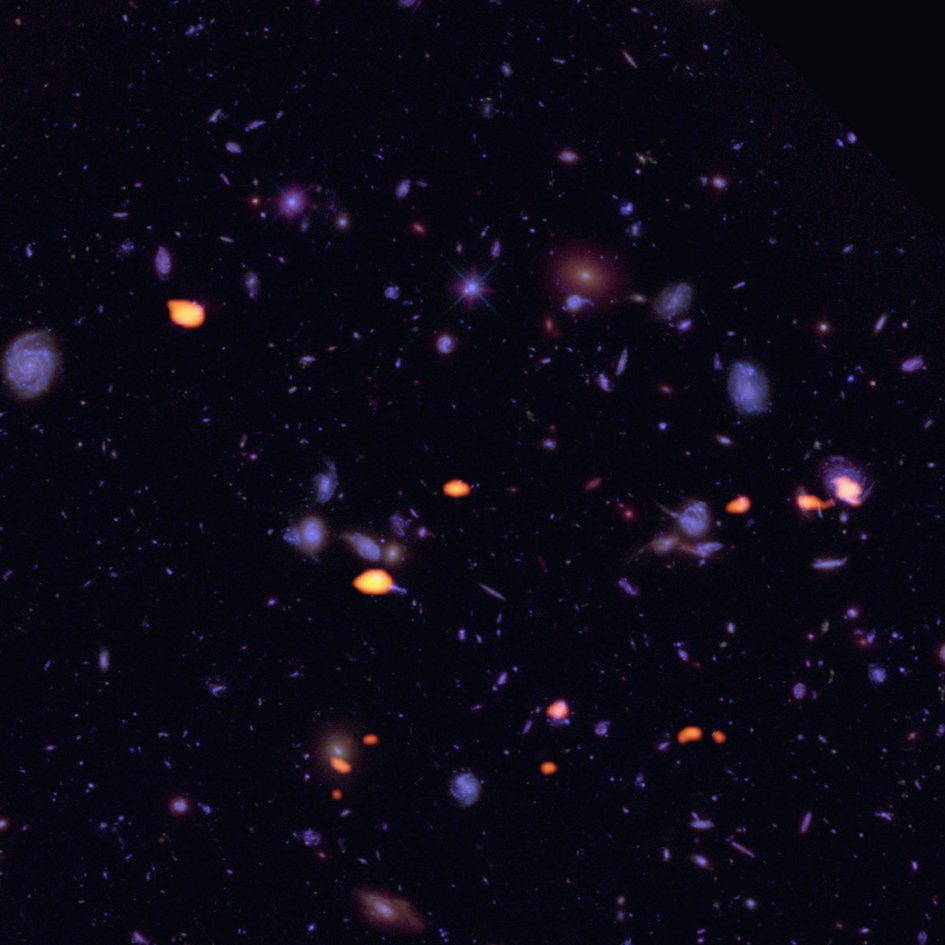
Since stars are born when dense clouds of hydrogen molecules collapse, the rate of star formation and the availability of molecular hydrogen, the fuel for star formation, are inextricably linked. Yet so far, star formation historians have mostly relied on other indicators to write their histories: light at a particular frequency that is typically emitted when giant clouds collapse, heating up in the process and radiating away that heat in the form of specific spectral lines.
Such studies have shown systematic trends in cosmic star formation. In the past, galaxies produced a much greater amount of stars than today. In fact, production rates have steadily declined from a maximally productive period between 3 and 6 billion years after the Big Bang, when galaxies formed about 10 times as many stars (going by the total mass of the stars created) each year than today. The reasons for this development are not yet understood. But the new observations have provided a new piece of the puzzle: The total amount of molecular hydrogen available in galaxies.
“The new ALMA results imply a rapidly rising gas content in galaxies with increasing look-back time,” said Manuel Aravena, an astronomer at the Universidad Diego Portales in Santiago, Chile, and Co-leader of the research team. “This increasing gas content is likely the root cause for the remarkable increase in star formation rates during the peak epoch of galaxy formation, some 10 billion years ago.”
“These newly detected carbon-monoxide rich galaxies represent a substantial contribution to the star-formation history of the universe,” says Roberto Decarli, an astronomer at the Max Planck Institute for Astronomy (MPIA) in Heidelberg, Germany, and member of the research team. “With ALMA, we have opened a new pathway for studying the early formation and assembly of galaxies in the HUDF.”
The question of how this works in detail, and what factors influence the availability of molecular hydrogen (or not), will be guiding a Large Observation Program with ALMA that Walter and his colleagues have been awarded, in part based on their present results. Fabian Walter says: "We have yet to understand the exact causes of the cosmic star formation history. By supplementing the missing star-forming material, the approved ALMA Large Program will complete our view of the well-known galaxies in the iconic HUDF. As such, our Large Program will provide some key missing pieces of the puzzle of cosmic star formation".
An in-depth description of the results and background can be found here.
Background information
The results described here are part of the ASPECS project (= The ALMA Spectroscopic Survey in the Hubble Ultra Deep Field).
The researchers present their results today, September 22, at the Half a Decade of ALMA conference in Palm Springs, California. The results are also accepted for publication in a series of seven scientific papers appearing in The Astrophysical Journal:
Aravena M., Decarli R., Walter F., et al. 2016: "ALMA spectroscopic survey in the Hubble Ultra Deep Field: Continuum number counts, resolved 1.2-mm extragalactic background, and properties of the faintest dusty star forming galaxies", accepted for publication in ApJ
Decarli R., Walter F., Aravena M., et al. 2016: "ALMA spectroscopic survey in the Hubble Ultra Deep Field: CO luminosity functions and the evolution of the cosmic density of molecular gas", accepted for publication in ApJ
Decarli R., Walter F., Aravena M., et al. 2016: "ALMA Spectroscopic Survey in the Hubble Ultra Deep Field: Molecular gas reservoirs in high-redshift galaxies", accepted for publication in ApJ
Aravena M., Decarli R., Walter F., et al. 2016: "ALMA Spectroscopic Survey in the Hubble Ultra Deep Field: Search for [CII] line and dust emission in 6<z<8 galaxies", accepted for publication in ApJ
Bouwens R., Aravena M., Decarli R., et al. 2016: "ALMA Spectroscopic Survey in the Hubble Ultra Deep Field: The Infrared Excess of UV-selected z=2-10 galaxies as a function of UV-continuum Slope and Stellar Mass", accepted for publication in ApJ
Carilli C., Chluba J., Decarli R., et al. 2016: "ALMA Spectroscopic Survey in the Hubble Ultra Deep Field: implications for spectral line intensity mapping at millimeter wavelengths and CMB spectral distortions", accepted for publication in ApJ
Additional figures and download
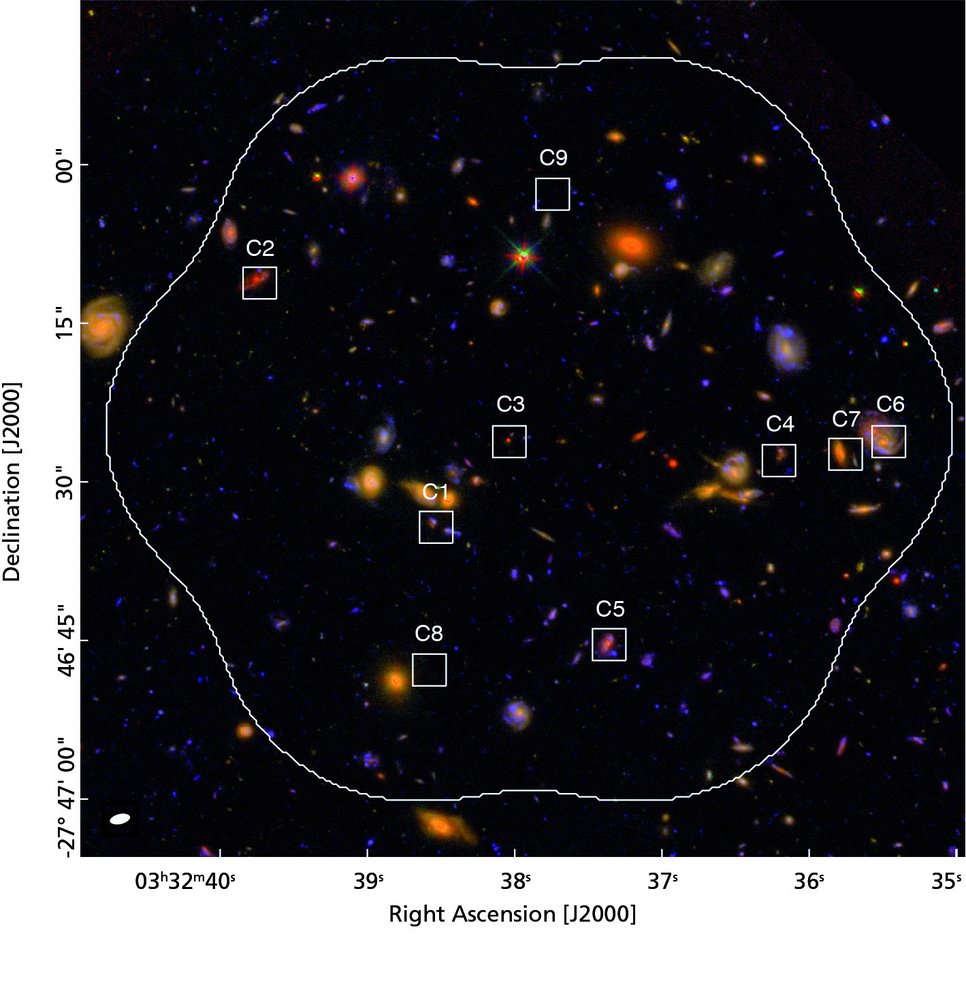
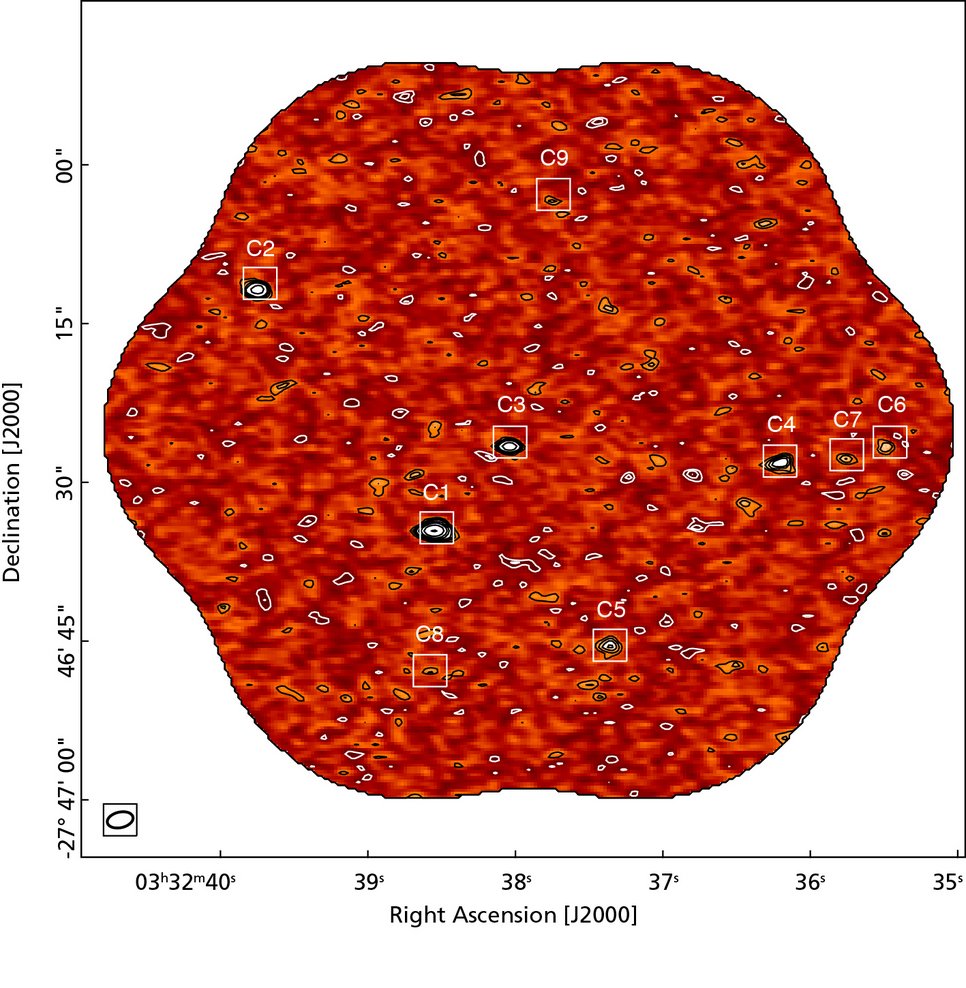
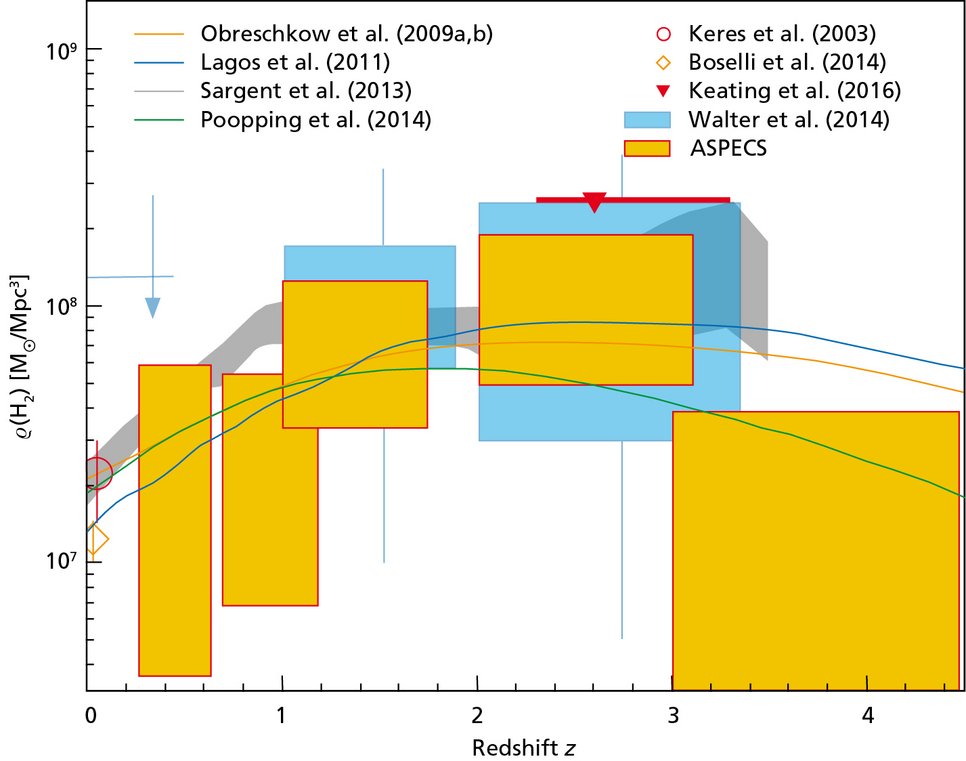
Download

Figure 1

Figure 2

Figure 3


